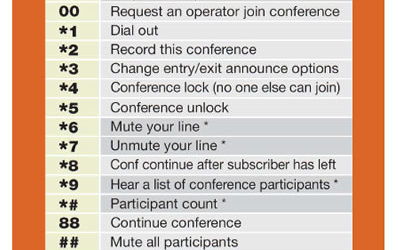Probably the number one issue for most people is the audio quality on a conference call because obviously, if you can’t hear everyone else on a conference call, you’re not going to get much done.
There are a couple of things you as the host can do to make sure people hear clearly on your calls. If you’re going to have more than eight people on a call, it’s typically much more helpful to start by having everyone muted. This is typically a touch-tone command that’s easy to do. On our system, you simply press pound-pound and then all the attendees will be muted initially, and you’ll eliminate background noise so people can hear the host clearly. At any point during the call, participants that need to speak can easily unmute themselves. This is one concrete example, but speaking more broadly, audio quality is mostly affected by your choice of audio provider.
At Adigo Conferencing, there are two primary technical reasons that drive audio quality. The first is transport, and the second is the bridging equipment itself. With regard to transport, every provider has a different architecture they’ve implemented. Adigo has chosen a quality-focused implementation for our architecture and bridging equipment. What this means for people on our calls is that the audio quality eliminates many of the artifacts that people are used to hearing. These sound artifacts include things like echo, latency, static or other types of pops that you may associate typically with VoIP-based audio quality or services like Skype.
Bridging is another important issue as well. Many providers have gone to generalized servers for conferencing bridging. Here at Adigo, we continue to use dedicated server equipment that is purpose built for audio conferencing. This provides fast processing speed which drives higher audio quality.





0 Comments